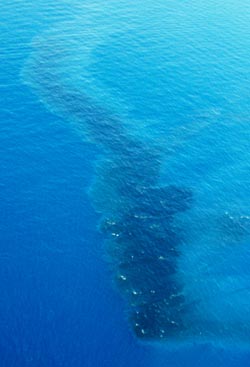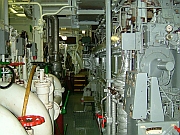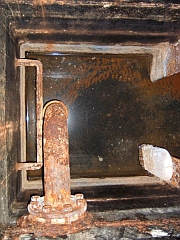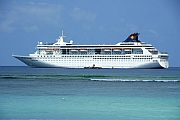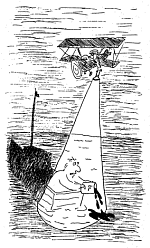Les déversements d'hydrocarbures lors des opérations de routine des bateaux (en anglais)
Operational Oil Discharges at Sea
Would you have thought that in most seas of the world it is allowed to discharge oil or mixtures containing oil?
But: this does not mean that you are allowed to dispose of your waste oil next time you go on a ferry boat for your summer holiday!
The only allowable discharge is where a discharge rate of 15 parts of oil to one million parts of water (15 ppm) is achieved through oil filtering/separating equipment. All vessels over 400 tons are required to be fitted with this type of equipment which must also be approved to meet standards set by the International Maritime Organization (IMO).
Vessels under 400 tons must comply with the discharge restrictions but are exempted from any specific ship-board equipment requirement. In most cases this means that oily residues must be stored onboard for disposal at port waste reception facilities.
There are also special areas where no oil discharge is allowed at all (see MARPOL Particularly Sensitive Sea Areas).
Oil is a waste product not only discharged from oil tankers but from all vessels. The majority of operational (deliberate) discharge is caused by hydrocarbon residues unfit for propulsion.
Operational discharge from oil-tankers
In modern tankers, there are two different types of residues: fuel residue and waste waters.
Fuel residues, known as (oil) sludge, are agglomerates of solid and liquid materials with a tendency to form deposits. Sludge is usually caused by the presence of water in the oil, and can accumulate with use. It can be a major contributor to engine problems and thus has to be removed frequently. Fuel residues and engine oil must be discharged on land or burned onboard.
Wastewater from the bilge (bilge water) is produced when the machinery spaces of a vessel are cleaned. With the right equipment on board, dirty bilge water can be processed in a way that separates most of the oil from the water before it is discharged into the sea. The bilge is pumped from the engine sump into settling tanks. It is then filtered and separated by an oily water separator to a limit of 15 ppm. If the concentration is higher than 15 ppm, the discharge must be stopped and the wastewaters must be returned to the bilge water drain tanks.
As is the case with most other laws and regulations there are always people disobeying the rules. So in addition to the quantities of oil legally discharged into the oceans there are considerable amounts discharged illegally.
Operational discharges from non-tankers
More than 72,000 merchant ships enrolled on the Lloyd's Register, a register of maritime navigation, and several tens of thousands of other vessels are constantly on their way on the world's oceans transporting varying quantities of oil and fuel (Cedre 2007: 37).
All these vessels are equipped with oil residue recovery systems, generated by filtering heavy fuel oils before using them as propulsion fuel. They also have waste water drain systems and separators onboard. The residues from settling and filtering accumulated during journeys need to be disposed of for treatment in ports. However, the lack of facilities in some places, the time spent and the cost generated by these operations in a deballasting station in port can mean that vessels dispose of all or part of the contents of their recovery tanks at sea.
These spills totalled with an estimated 550,000 tonnes in the year 2000, making non-tankers the number one source of oil discharge by maritime transportation. This figure should however be handled with care. Due to a lack of statistics it is simply an estimate (Cedre 2007: 37).
Countermeasures
The attention paid to the pollution of the sea by oil tanker accidents triggered an awareness of the importance of operational discharge. In 1973, the volume of deliberate discharge was five times greater than accidental spills according to the US National Academy of Sciences. Such high volumes required worldwide control measures. These measures were brought in by the International Maritime Organization (IMO) within the framework of the Oilpol Convention (1954) and reinforced by the Marpol Convention (1973, 1978), which also extended them to non-tankers.
A reduction in the amount of oil discharges into the seas has mainly been achieved by
- Legislation regulating the limits of legally allowed discharge
- Improvement of ship-building technology
- Surveillance of oil discharge by means of remote sensing
